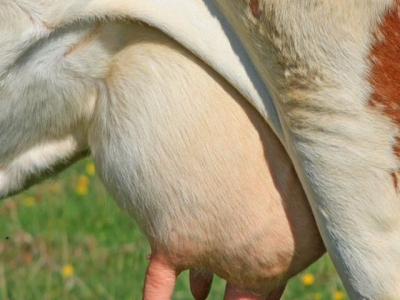Best practices may reduce environmental mastitis cases

Consequences of mastitis can be costly to a dairy, but treatment success varies depending on pathogen.
Environmental mastitis is an ongoing battle in the dairy industry, and the consequences can be costly, with losses incurred from milk discard, added labor and antibiotics, while treatment success varies based on the pathogen, according to an announcement from Boehringer Ingelheim.
Dr. Linda Tikofsky, senior associate director of dairy professional veterinary services at Boehringer Ingelheim, said dairy producers can take steps toward control by focusing on the following factors.
Cleanliness. “Environmental pathogens can be found anywhere manure comes in contact with the udder,” Tikofsky said. Producers can minimize mastitis risk with facility practices such as:
* Providing an ample supply of dry, clean bedding that is frequently groomed;
* Refraining from overcrowding and/or overgrazing;
* Managing water tanks, feeding areas and walkways to eliminate standing water or excess manure that might splash onto the udder, and
* Keeping barns well ventilated to limit heat stress and the spread of bacteria.
Vaccination. Vaccination can help reduce the severity and incidence of coliform mastitis, Tikofsky said, adding, “I recommend vaccinating all cows at dry-off [and] then giving a booster vaccine two to four weeks later. If you’re struggling with an outbreak or it’s simply more convenient, you can also vaccinate the entire herd at once. Just don’t forget to give a booster. The vaccine you choose should have a short meat withdrawal and provide protection against Escherichia coli, endotoxemia caused by E. coli and Salmonella typhimurium. Work with your veterinarian to set a protocol in place.”
Dry-cow treatment. “Dry-cow therapy is a great way to control both contagious and environmental infections,” Tikofsky noted.
“Antibiotic treatment during the dry period generally results in higher cure rates than during lactation, while teat sealants are shown to aid in preventing new infections,” she added. “Make sure you are using a teat sealant with a color that’s easy to distinguish from milk during removal at calving time.”
Proper milking procedures. Even though environmental pathogens can be contracted outside the parlor, milking management is still an important aspect of prevention, she said. Ensure that the parlor routine includes fore-stripping, pre-dipping and properly drying teats. This will maintain teat health and decrease exposure to potential pathogens.
Keeping the milking equipment functioning properly will also maintain teat health. Tikofsky encouraged the checking of equipment, vacuum levels and pulsators at least twice a year by a trained technician.
Record-keeping. Records can help producers easily track potential factors contributing to a mastitis outbreak as well as the effectiveness of current treatment protocols.
“Ideally, one person would be in charge of keeping records on a dairy software program,” Tikofsky said. “These records can help producers make thoughtful, effective management decisions.”
Protocols and treatment records should be reviewed with the herd veterinarian at least annually.
Even with the best practices in place, mastitis infections will still happen. When clinical mastitis occurs, Tikofsky recommended taking a milk sample, culturing and waiting 24 hours for results before treating.
“Culturing can be done without a negative effect on cure rate or animal welfare in cases with mild or moderate mastitis,” she said. “If you think you’re experiencing an environmental mastitis outbreak, work with your veterinarian to identify and address the cause.”
Có thể bạn quan tâm
 Tough winter leads to challenging spring for cattle
Tough winter leads to challenging spring for cattle Cattle producers are coming off what Kansas State University beef specialist Justin Waggoner, calls “one of the roughest winters” in recent memory
 Weight gain in horses more than doubles risk of laminitis
Weight gain in horses more than doubles risk of laminitis Horses and ponies that gain weight are more than twice as likely to develop laminitis than if they lose or maintain their weight, according to new research
 Tips offered for dealing with flooded hay, grain
Tips offered for dealing with flooded hay, grain First step is to determine if water is from potentially contaminated flood waters or ponded water from rain or snowmelt.